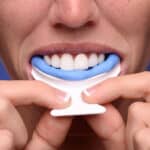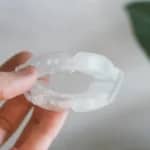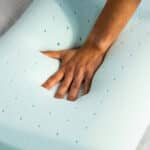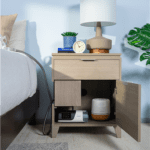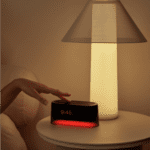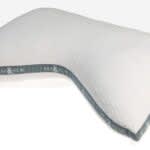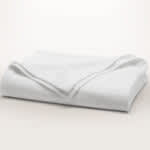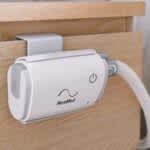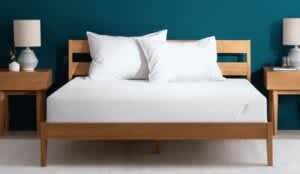Proper sleep hygiene requires a quiet sleep environment. A loud, squeaky bed disturbs that peace. Tossing and turning can make a noisy bed even more problematic.
There are many reasons a bed might squeak. Sleep surfaces consist of several components, any of which could produce noise under some circumstances. Fortunately, there are ways to fix a squeaky bed.
Let Us Help You Find the Perfect Bed
Answer a few questions to find the right mattress for your unique needs
What Causes a Bed to Squeak?
Many factors can contribute to squeaking. When determining how to fix the noise, first pinpoint which bed component is behind it. You can save time and energy by testing each part of the bed setup separately. In some cases, a squeaky component may need to be repaired or replaced.
Mattress
Hybrid and innerspring mattresses contain coils that often squeak as they age. To test whether your mattress is squeaking, remove it from the frame and place it on the floor. Then, move around on the mattress. If you hear squeaking, your mattress is probably the culprit and may need to be replaced. All-foam and all-latex mattresses do not contain coils, so they should not squeak.
Box Spring
Box springs contain coils that tend to squeak as they get older and rub together more. Test your box spring by removing it from the frame and placing it on the floor. Press on different areas of the box spring to see if it squeaks. If so, you may need to replace the box spring.
Bed Frame
If you have ruled out your mattress and box spring as potential causes, friction in the joints of your bed frame may be to blame for the noise. This can occur with either wood or metal frames. Additionally, your mattress or box spring could also rub against your bed frame and squeak if there is not enough cushioning.
Wall or Floor
If your bed abuts the wall, the headboard or bed base could squeak at the point of contact. Similarly, the feet of the bed may make noise where they touch the floor.
How to Stop a Bed From Squeaking
Depending on the source of the noise, different methods may stop a bed from squeaking. We’ll walk you through potential solutions, but keep in mind that this is not a step-by-step guide. Ultimately, you’ll have to adjust your methods based on which component is squeaking.
Identify and Assess
Identify what part is squeaking and why. Then, assess the best course of action. For example, if aging coils in your mattress or box spring are responsible, it may be time to replace these components. You can see if your items are still under warranty, but most policies do not cover squeaking.
Tighten or Lubricate Joints
Your bed frame or foundation likely consists of wood or metal bars held together by joints. Through routine movement, the metal bolts or screws that hold these joints together may loosen. If a bed frame’s joints are loose and rubbing against one another, tighten the screws or bolts, and the squeaking may stop. Adding plastic washers to the screws or bolts can tighten joints further and prevent the metal from rubbing together.
Additionally, lubricating metal joints with WD-40 or a similar product often reduces noise. For wooden frames, beeswax or candle wax may be effective.
If none of these solutions stop the sound, it is probably coming from elsewhere.
Cushion the Frame
Your bed frame may rub against the wall or floor. Similarly, your mattress or box spring may rub against the frame. If this friction produces noise, adding cushioning where the rubbing occurs might help. Try placing rags, t-shirts, or socks between the frame and the box spring or mattress. Adding furniture pads behind the headboard and under the legs of the bed frame can also prevent friction and associated noises.



